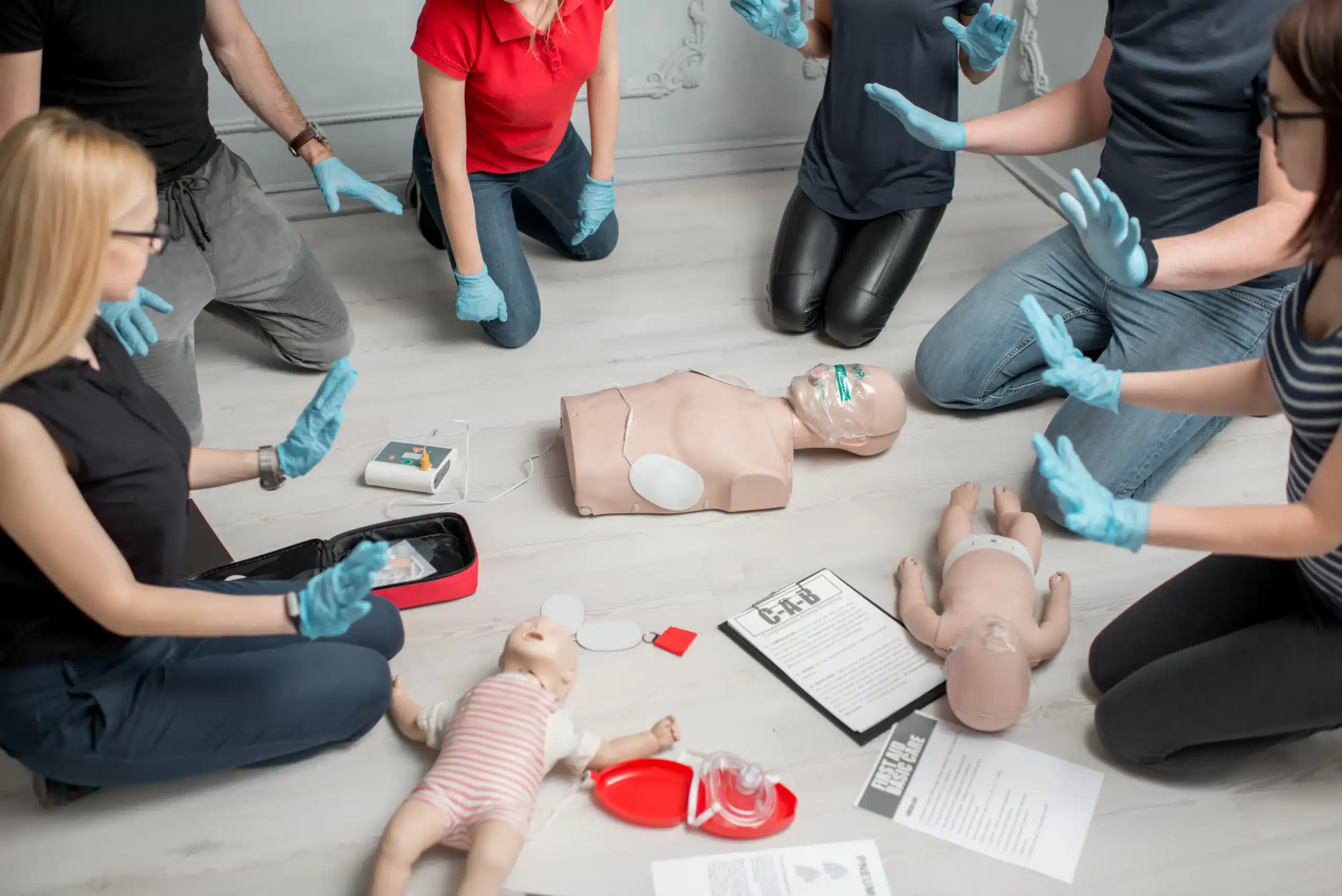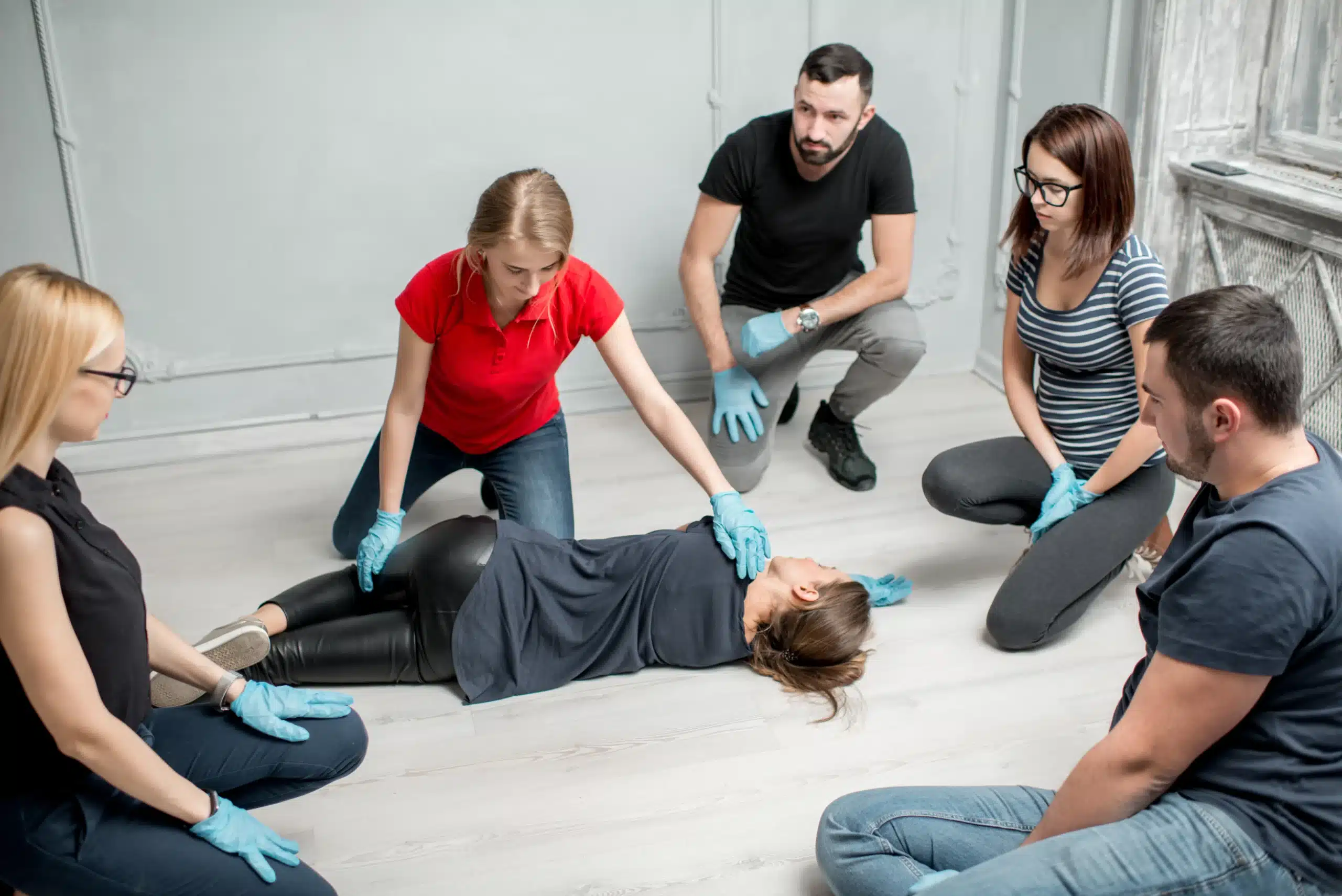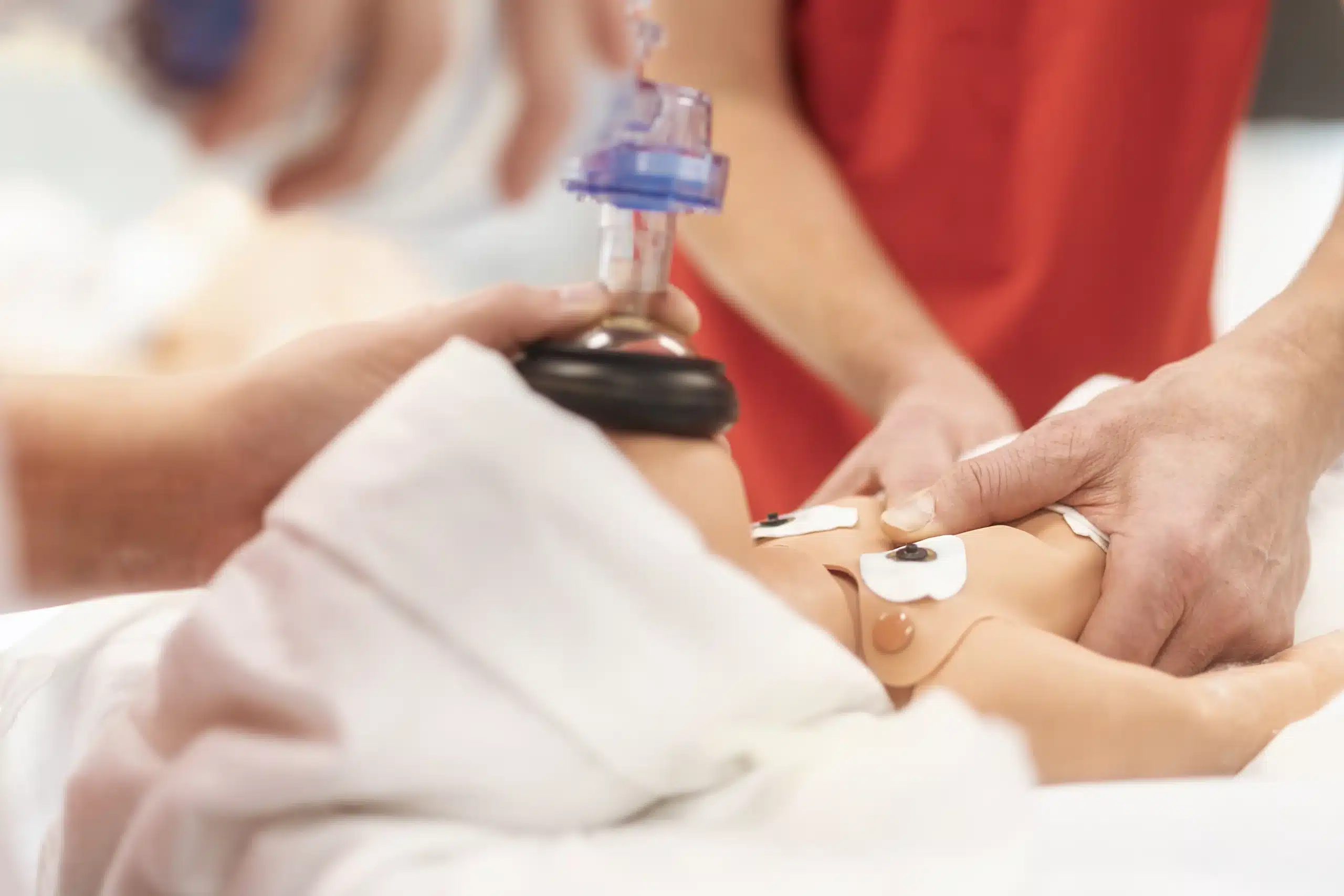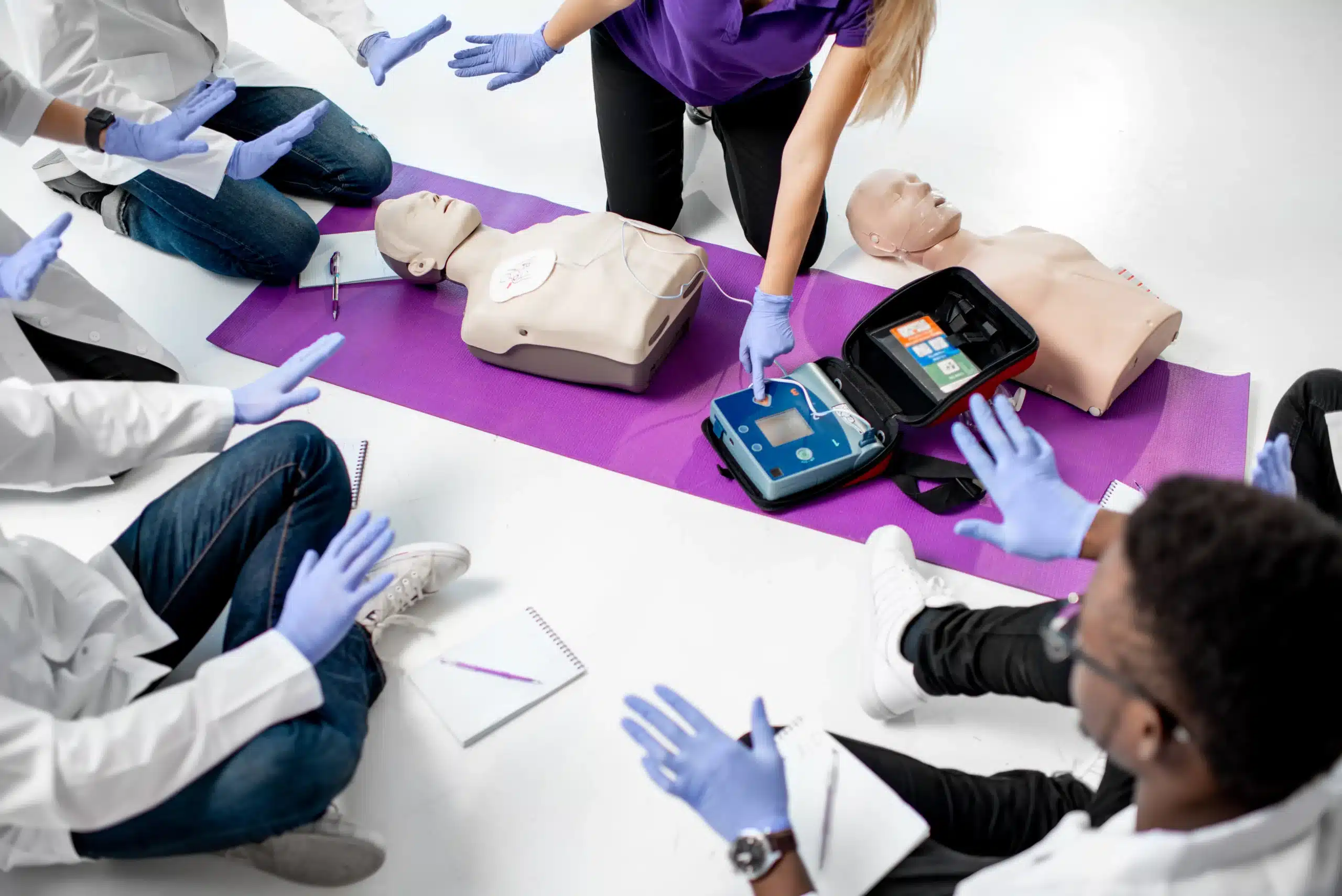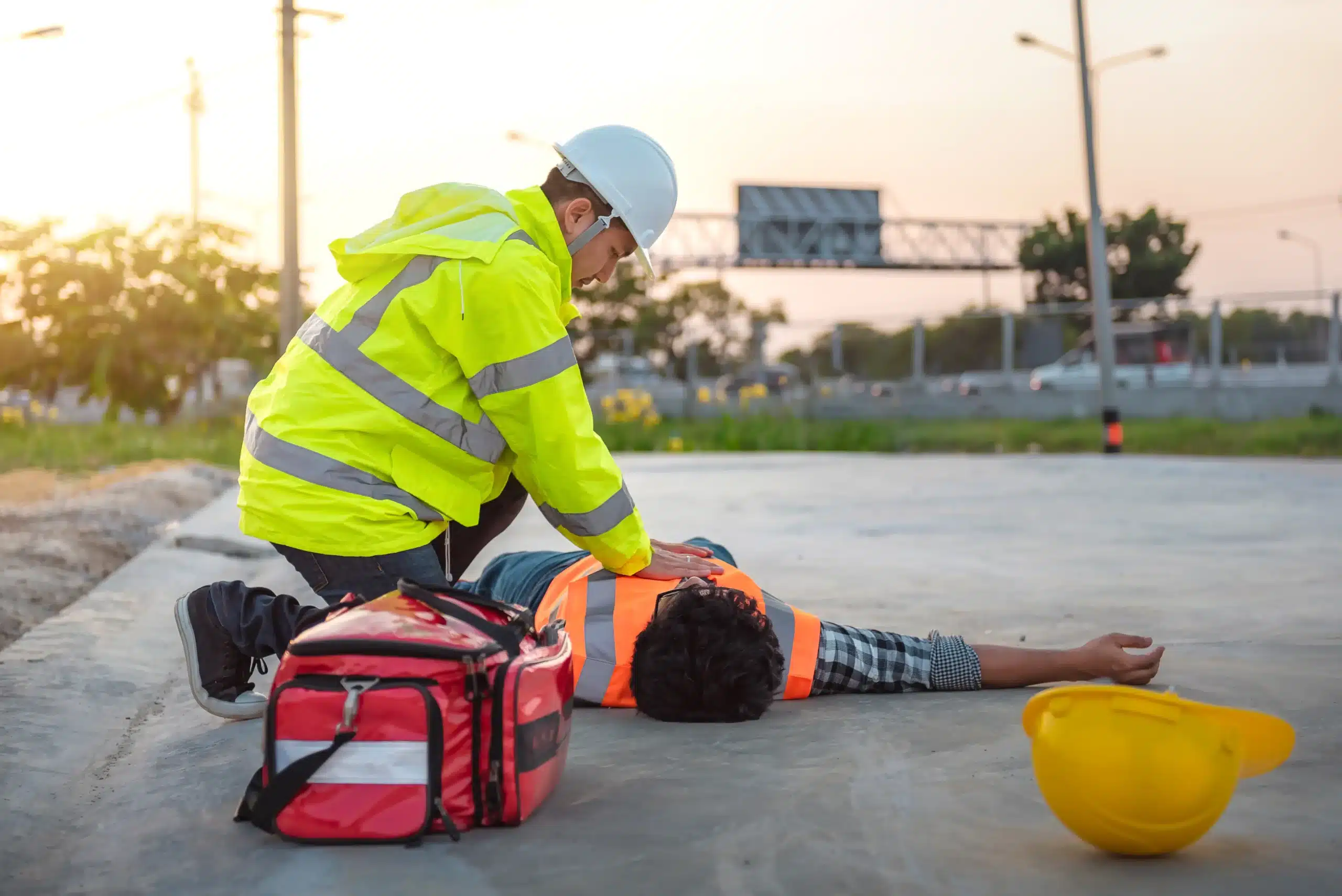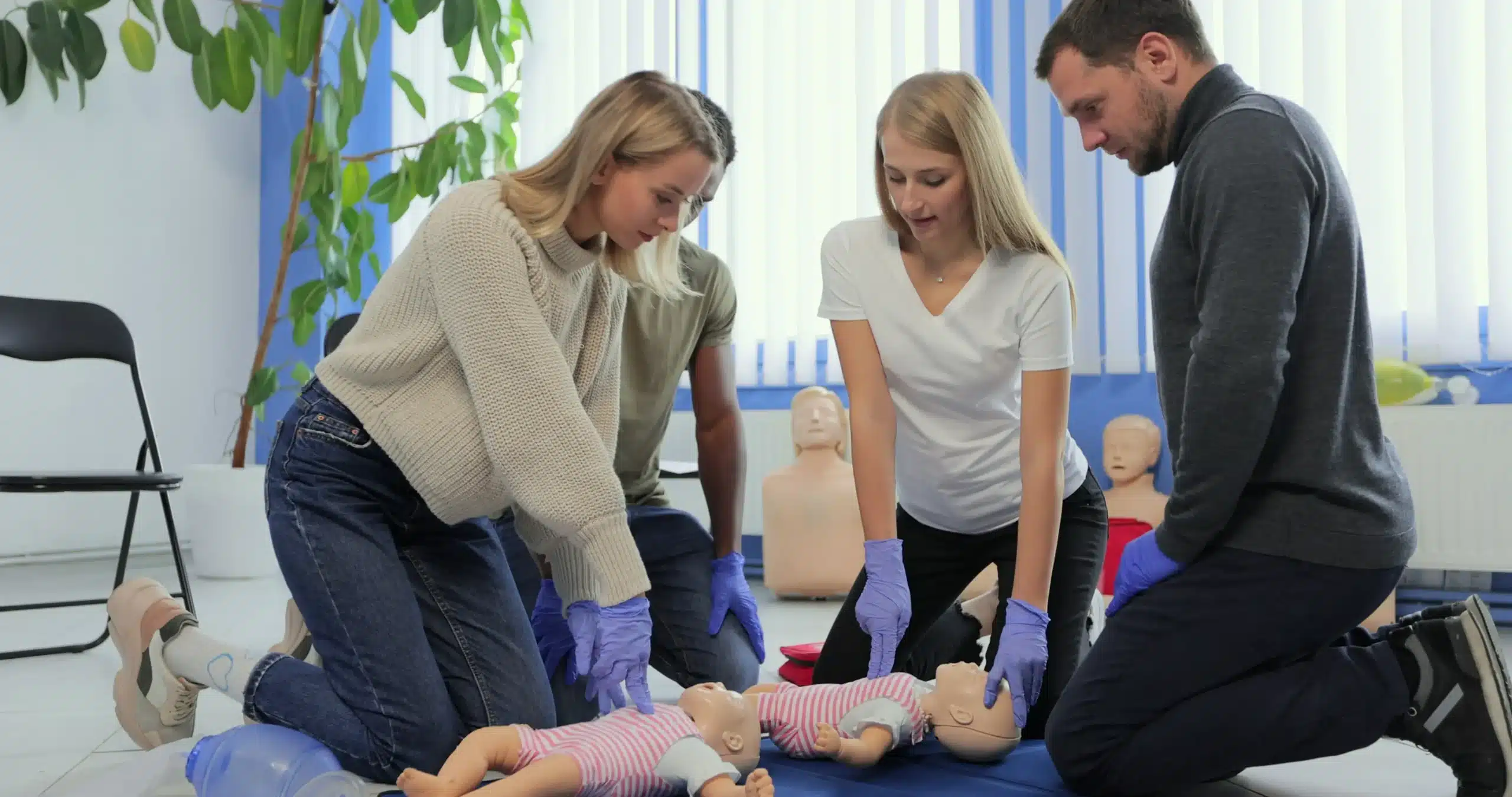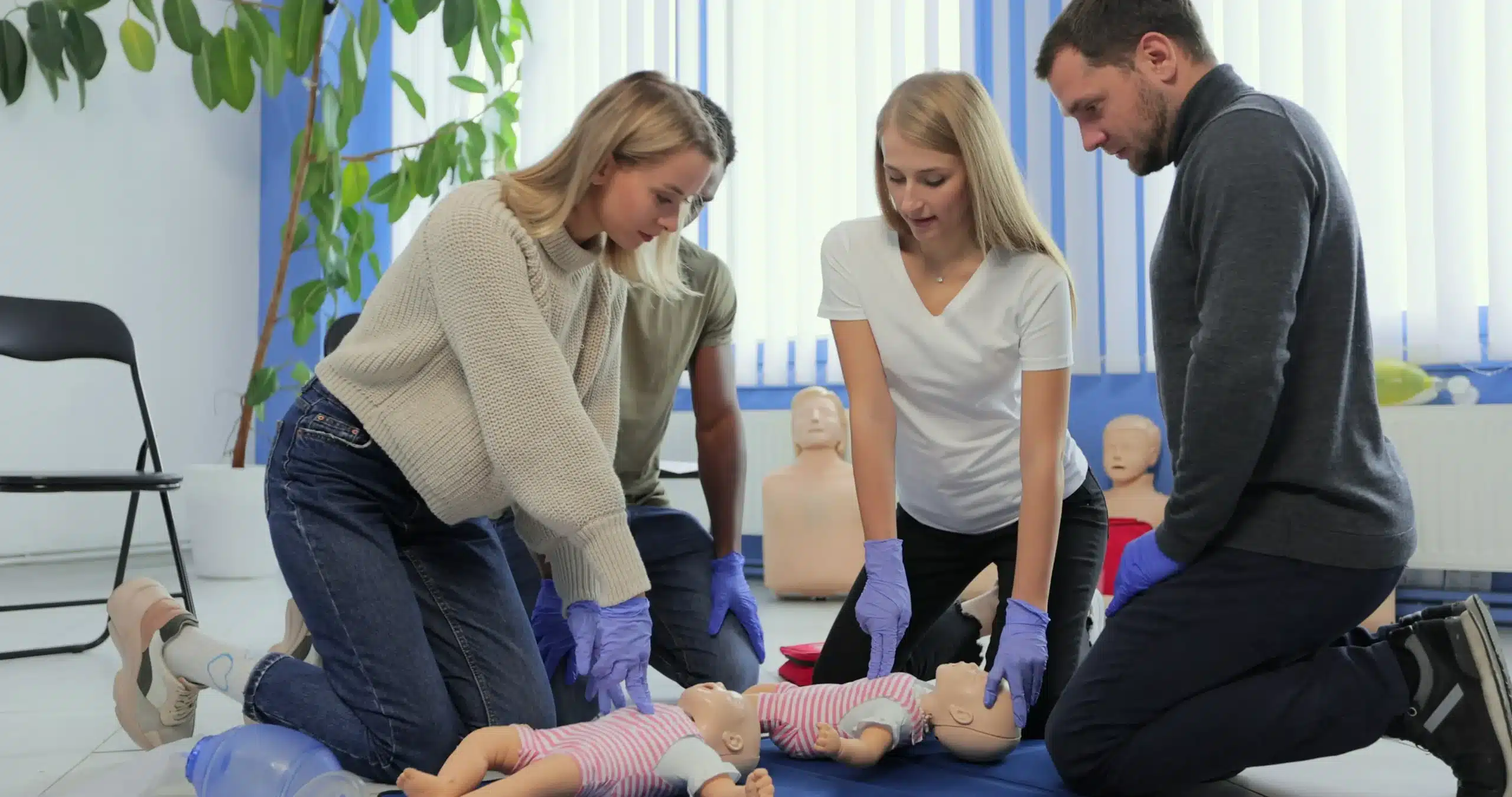Working in healthcare in Oakland means you’re dealing with precious lives every day. In critical situations, seconds can matter, and having the right skills can make all the difference. BLS for healthcare providers in Oakland empowers you to respond confidently and effectively to medical emergencies. This article breaks down everything you need to know about BLS certification, from the essential skills it covers to where you can find training in Oakland. We’ll explore the differences between BLS and general CPR, the various course formats available, and the costs involved. We’ll also highlight Safety Training Seminars, a leading provider of BLS certification in Oakland, known for its flexible scheduling and commitment to high-quality instruction.
Key Takeaways
- BLS is more than just CPR: It’s the foundation of emergency medical care for healthcare professionals, covering a broader range of skills like AED use, airway management, and team dynamics. Find a course format—in-person, online, or blended—that suits your learning style and schedule.
- Maintain your skills: Your BLS certification lasts two years. Stay prepared by recertifying and regularly practicing your skills to maintain proficiency and confidence in emergencies.
- Select the right BLS course: Choose a reputable provider with AHA-certified courses, convenient schedules, and competitive pricing. Consider factors like course format, content, and ongoing support to find the best fit for your needs. Safety Training Seminars offers various options, including group discounts and a low price guarantee.
What is BLS and Why is it Important?
What is BLS?
Basic Life Support (BLS) is the bedrock of emergency medical care. It’s how trained professionals respond to life-threatening situations like cardiac arrest, respiratory distress, and obstructed airways. BLS certification equips healthcare providers with the skills to deliver immediate care in both in-hospital and out-of-hospital settings. This training emphasizes high-quality CPR and other essential cardiovascular life support techniques. Think of it as the foundation upon which more specialized emergency care is built.
How is BLS Different from General CPR?
While both BLS and CPR involve chest compressions and rescue breaths, BLS certification delves deeper. It’s designed specifically for healthcare professionals, like doctors, nurses, paramedics, and other first responders. BLS builds upon the fundamentals of CPR, adding advanced techniques for managing airways, providing ventilation support, and using an AED. Essentially, BLS provides a broader skill set to handle a wider range of medical emergencies. If you’re pursuing a career in healthcare, BLS certification is often a requirement, whereas general CPR training is suitable for anyone who wants to learn life-saving skills. Safety Training Seminars offers group discounts for BLS certification, making it more accessible for teams and organizations.
Where Can I Get BLS Certified in Oakland?
Finding the right BLS certification course in Oakland depends on your schedule, learning style, and budget. Here are a few options to consider:
Safety Training Seminars
Safety Training Seminars is a woman-owned training center offering AHA-certified BLS courses in Oakland. They pride themselves on flexible scheduling, with classes offered daily. They also provide other certifications, including ACLS, PALS, and First Aid. For a comprehensive look at their training options, visit their website.
American Red Cross
The American Red Cross also provides BLS certification in Oakland, focusing on healthcare providers. Their streamlined courses can often be completed in a single day. The Red Cross is a familiar name for many, making it a comfortable choice for some.
CPR Certification Oakland
CPR Certification Oakland offers AHA-certified BLS, CPR, and AED training. They concentrate on preparing people to respond to emergencies involving adults, children, and infants.
Oakland Fire Department
The Oakland Fire Department may also offer CPR and First Aid training, which could include BLS certification. It’s worth checking their website or contacting them directly for the latest information on available courses and schedules. Local fire departments are often valuable community resources for this type of training.
BLS Course Formats and Duration
Finding the right BLS course often depends on your schedule and learning style. Thankfully, several options are available, including in-person, online, and blended learning formats. Let’s take a look at each one.
In-Person Training
In-person BLS training offers hands-on learning. You’ll work directly with an instructor and other students to practice essential skills like CPR, using an AED, and providing ventilation support. This format allows for immediate feedback and personalized guidance. In Oakland, organizations like the American Red Cross and Safety Training Seminars offer in-person BLS certification. These courses are designed for healthcare providers and typically follow American Heart Association guidelines. Group sessions are also available, which can be a convenient option for colleagues who want to train together. Safety Training Seminars offers group discounts, making it even more cost-effective.
Online and Blended Learning
For those with busy schedules or who prefer self-paced learning, online and blended learning options provide flexibility. Online BLS courses often involve interactive modules, videos, and assessments. Blended learning combines online coursework with in-person skills sessions. This hybrid approach lets you learn the theoretical material online and then demonstrate your skills in person. The Red Cross offers online and blended learning for BLS certification and recertification.
How Long Does BLS Training Take?
The duration of BLS training depends on the format and the course provider. In-person BLS courses typically take about 4.5 hours. However, group sessions or courses that incorporate local protocols might require more time. Online and blended learning formats offer more flexibility, allowing you to complete the coursework at your own pace. No matter which format you choose, make sure the course meets the American Heart Association guidelines for BLS certification. You can find more information about course duration and scheduling on the Safety Training Seminars website.
Essential BLS Skills
As a healthcare provider, your BLS skills are critical for responding to emergencies. These skills empower you to deliver timely and effective care, potentially saving lives. Let’s break down the key components of BLS:
High-Quality CPR
High-quality CPR is the cornerstone of BLS. It involves delivering effective chest compressions and rescue breaths to maintain blood circulation and oxygenation in a patient experiencing cardiac arrest. Proper technique, including correct hand placement and compression depth, is crucial for maximizing the effectiveness of CPR and increasing the chances of survival. This emphasis on quality is why regular practice and BLS certification are so important.
Using AEDs
Automated External Defibrillators (AEDs) are life-saving devices used to restore a normal heart rhythm in victims of sudden cardiac arrest. BLS training equips healthcare professionals with the knowledge and skills to quickly and correctly use an AED. Understanding how to assess the patient, operate the AED, and integrate its use with ongoing CPR is essential for successful resuscitation. Attending a BLS course will ensure you’re prepared to use this vital technology.
Airway Management and Breathing Support
Effective airway management is another critical aspect of BLS. This involves ensuring the patient’s airway is open and providing appropriate breathing support through rescue breaths or the use of airway adjuncts. BLS training covers various techniques for opening the airway and delivering breaths, preparing healthcare providers to manage respiratory emergencies. These skills are essential for maintaining oxygenation until advanced medical help arrives.
Recognizing Cardiac Arrest and Other Emergencies
BLS training goes beyond performing CPR and using an AED. It also emphasizes quickly recognizing the signs and symptoms of cardiac arrest and other life-threatening conditions. Early recognition is key to initiating prompt intervention and improving patient outcomes. BLS-certified healthcare providers are trained to assess patients rapidly, identify emergencies, and activate the appropriate response system.
Team Dynamics in Emergencies
In a healthcare setting, emergencies often require a coordinated team effort. BLS training emphasizes clear communication, roles, and responsibilities within a team during a resuscitation event. Effective teamwork ensures smooth transitions, minimizes errors, and maximizes the efficiency of care, ultimately increasing the patient’s chances of survival. Practicing these team dynamics during BLS training builds confidence and preparedness for real-world emergencies.
BLS Certification Costs in Oakland
Getting your BLS certification is an investment in your career and the safety of those around you. Understanding the costs involved can help you plan and budget accordingly.
Typical Course Prices
In Oakland, BLS certification typically costs between $65 and $85. A basic BLS CPR course usually costs around $65, while a combined CPR and First Aid class is closer to $85. These prices cover the comprehensive training you’ll receive, all aligned with American Heart Association (AHA) standards.
Group Discounts and Promotions
Coordinating training for a group? Look for group discounts. Many training centers offer reduced rates for group BLS certification, making it more cost-effective to train your whole team at once. This is particularly helpful for organizations certifying staff in BLS, ACLS, and PALS. Some providers also offer discounts through the AHA’s RQI program, so it’s always worth asking.
Safety Training Seminars’ Low Price Guarantee
Safety Training Seminars offers competitive pricing on all courses, including BLS, ACLS, PALS, CPR, and First Aid. We’re committed to providing high-quality training at a price that works for you. Check out our low price guarantee for details. We believe everyone should have access to this life-saving training, and we work hard to make it as accessible as possible.
BLS Certification: How Long Does it Last and How Do I Renew It?
Two-Year Certification Period
Your BLS certification is valid for two years. Keeping track of your expiration date is crucial for staying compliant with healthcare standards and ensuring you’re always prepared for emergencies. Think of it like renewing your driver’s license—it’s essential for maintaining your qualifications.
Renewal Requirements
To maintain your BLS certification, you’ll need to take a renewal course before your current certification expires. These courses, like those offered by CPR Classes Oakland, cover the most recent American Heart Association guidelines and best practices for emergency cardiovascular care. Staying current ensures you’re equipped to deliver the highest quality patient care. For helpful advice on the renewal process, check out these resources on common mistakes to avoid and key things to remember during BLS renewal.
Recertification Courses
The American Red Cross offers flexible recertification options, including convenient online and in-person BLS courses. These courses are designed to be efficient and effective, allowing you to quickly refresh your skills and knowledge. The Red Cross is a trusted provider of BLS training for healthcare professionals, making them a reliable choice for recertification.
Choosing the Right BLS Course
As a healthcare provider, having the right BLS certification is crucial for your career and your patients’ safety. But with different courses and providers available, how do you choose the best fit? This section breaks down key factors to consider when selecting a BLS course in Oakland.
What to Look For in a Provider
First and foremost, choose a training center with a solid reputation and accreditation from a recognized organization like the American Heart Association (AHA). For example, Safety Training Seminars is a woman-owned AHA Training Center offering various courses, including BLS, ACLS, and PALS certifications in Oakland. Look for providers who prioritize high-quality instruction, convenient schedules, and updated materials reflecting the latest guidelines. Excellent customer service can also make your certification process smoother. Safety Training Seminars also offers the American Academy of Pediatrics NRP certification.
Comparing Courses
Not all BLS courses are created equal. Consider the course format and content. The AHA’s RQI program, offered by Safety Training Seminars for BLS, ACLS, and PALS, is known for its efficient and modern approach. This program often appeals to busy healthcare professionals because of its streamlined learning experience. If your schedule is tight, explore blended learning options that combine online modules with in-person skills practice. This format offers flexibility while ensuring you receive hands-on training.
Common Challenges for Healthcare Providers
Even after getting certified, staying current with your BLS skills can be tough. Regularly practicing your skills and attending refresher courses are essential. Keeping up with the latest AHA guidelines is also vital, as protocols can change. Many providers find refreshing CPR skills challenging, even with frequent patient contact. Prioritize ongoing learning and skill maintenance to provide the best possible care. Consider providers like Safety Training Seminars, which offer group discounts and a low price guarantee to make continuing education more affordable.
Get Ready for Your BLS Class
Getting ready for your BLS class doesn’t have to be stressful. With a little preparation, you can walk into class feeling confident and ready to learn skills that can save a life.
What to Bring
Your BLS class will cover essential life support techniques, including CPR and AED use for adults, children, and infants. Come prepared to learn and actively participate. Bring a notebook and pen to jot down important information and any questions you may have for your instructor. Comfortable clothing is also recommended, as you’ll be practicing skills like chest compressions and rescue breaths.
Pre-Course Prep
While not required, reviewing some basic CPR information before class can be helpful. Familiarizing yourself with the latest BLS guidelines from the American Heart Association can give you a head start. Don’t worry about mastering everything beforehand—your instructor will guide you through each step during the class.
Tips for Success
The key to a successful BLS class is active participation and a willingness to learn. Ask questions, engage with the practice scenarios, and don’t be afraid to make mistakes—that’s how we learn! After class, regular practice is crucial for maintaining proficiency. Consider joining a study group or practicing with a friend or family member. Staying current with guidelines is also important, so remember to renew your BLS certification every two years. By taking these steps, you’ll be well-equipped to provide effective care in an emergency.
Stay Sharp: Maintaining Your BLS Skills
As a healthcare provider, your BLS skills are crucial for ensuring patient safety and positive outcomes. It’s not enough to just get certified—maintaining your skills is an ongoing process. Here’s how you can stay sharp and confident in your abilities:
Continuing Education
Continuing education is key to staying at the top of your game. By regularly engaging in training and recertification, you ensure you’re up-to-date on the latest techniques, guidelines, and advancements in emergency medical care. This benefits your patients and helps you grow professionally. Think of it as an investment in both your career and the well-being of those in your care. The field of healthcare is constantly evolving, and committing to ongoing learning ensures you’re always prepared to provide the best possible care. Check with your employer or professional organizations for relevant continuing education opportunities.
Practice and Refreshers
Even with continuing education, regular practice is essential for maintaining muscle memory and confidence in your BLS skills. Set aside time for practice scenarios with colleagues or use online resources. Attending refresher courses can solidify your knowledge and identify any areas where you might need a little extra focus. Just like any skill, BLS requires consistent practice to remain sharp. Regular training ensures you’re prepared to handle emergencies and boosts your confidence in performing BLS effectively. This confidence can make all the difference in a high-pressure situation.
Staying Up-to-Date
Staying current with the latest BLS guidelines is paramount. The American Heart Association regularly updates its BLS guidelines, so it’s important to stay informed. Utilize online resources to keep up with changes in protocols or best practices. Also, consider exploring programs like the RQI program offered by Safety Training Seminars in Oakland. RQI helps Oakland healthcare providers maintain their CPR skills and knowledge through regular practice. Staying informed and consistently practicing will ensure you’re always ready to provide the highest standard of care in any emergency.
BLS Certification: Legal and Professional Requirements
Requirements in Oakland
BLS certification is often a requirement for healthcare providers in Oakland and throughout California. Many healthcare employers, including hospitals, clinics, and other medical facilities, mandate BLS certification for their staff. This ensures healthcare professionals possess the skills to respond to medical emergencies. While specific requirements can vary, adhering to the American Heart Association (AHA) guidelines for BLS certification is widely accepted. You can find AHA-certified BLS training through various providers like Safety Training Seminars, the American Red Cross, and CPR Certification Oakland. These organizations offer comprehensive courses that meet the standards for healthcare professionals. Check with your employer or licensing board for specific requirements in your field.
Impact on Patients and the Community
BLS certification significantly impacts patient care and community health. For healthcare providers, BLS training instills confidence and preparedness in handling emergencies. This translates to improved patient outcomes, as certified professionals can administer life-saving care during critical moments. Regular training and recertification ensure healthcare professionals stay current with the latest techniques and guidelines in emergency medical care. Beyond individual patient care, BLS-certified professionals contribute to a safer community. Their skills extend beyond medical facilities, empowering them to respond to emergencies in various settings. This widespread knowledge of BLS strengthens the chain of survival, increasing the chances of positive outcomes for anyone experiencing a medical emergency. The availability of programs like the BLS RQI program makes maintaining these crucial skills convenient and accessible for Oakland healthcare providers.
Related Articles
- BLS Renewal in Alameda: Your Easy Guide – Oakland CPR Classes
- BLS Courses in Oakland: Your Guide to Certification – Oakland CPR Classes
- Online BLS Classes in Oakland: Your Complete Guide – Oakland CPR Classes
- BLS ACLS PALS Courses in Oakland: Your Complete Guide – Oakland CPR Classes
- ACLS Courses in Oakland: Your Complete Guide – Oakland CPR Classes
Frequently Asked Questions
Is BLS certification the same as CPR certification?
No, BLS certification is more comprehensive than general CPR certification. While CPR is a core component of BLS, BLS also includes training on airway management, using an AED, and other advanced life support techniques. BLS certification is typically required for healthcare professionals, while general CPR training is suitable for anyone wanting to learn life-saving skills.
How long does it take to get BLS certified?
In-person BLS courses usually take around 4.5 hours to complete. Online and blended learning options offer more flexibility, allowing you to work at your own pace. However, all BLS certifications require an in-person skills assessment.
How much does BLS certification cost in Oakland?
BLS certification in Oakland typically ranges from $65 to $85. Many providers offer group discounts, which can lower the cost per person. Be sure to check with specific training centers for their pricing and any available discounts.
How often do I need to renew my BLS certification?
BLS certification is valid for two years. You’ll need to take a recertification course before your current certification expires to maintain your credentials and stay up-to-date with the latest guidelines.
What if I have a busy schedule and can’t attend a traditional in-person BLS class?
Many providers offer flexible options like online coursework combined with in-person skills sessions. This blended learning format allows you to complete the theoretical part of the training online at your convenience and then schedule a shorter in-person session to demonstrate your skills.


